Introduction
Introduction of the X79 vs X99 ASUS GTX 980 4GB Quad SLI
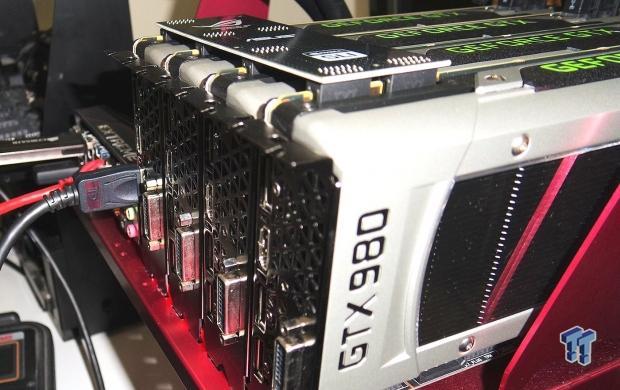
The other day we got the chance to take a look at the performance of one, two, three and four ASUS GTX 980 4GB cards in SLI. Performance for the most part was pretty interesting, and while the general thought process is that if you're going to build a multi-GPU video card setup that represents any real value, you should probably stop at two. We didn't see impressive scaling as we moved to three and four video card setups.
Still, as we tested the ASUS GTX 980 4GB 4-Way SLI setup, I found myself wondering, if you're going to jump on this setup, and you're currently on an X79 / DDR3 build, should you also be looking at throwing the extra money down that is required to move to a brand new X99 / DDR4 build?
Our X99 machine has been ignored the last few weeks since we received our Maxwell based GTX 900 series cards from NVIDIA and partners. These cards are extremely hot right now and for good reason. While I always do try to work off a system of first come, first serve, the simple fact is that when you've got something as attention grabbing as these new video cards, you have to give them priority, as they're what people want to see.
Still, today I pulled the X99 testbed back out and installed our four ASUS GTX 980 4GB video cards into it. If you're going to drop $2,200+ on a brand new video card, should you be also be looking to spend the $2,000 or there abouts that is associated with building a top of the line X99 system? With a pair of Extreme Edition CPUs on hand, the best X99 and X79 board we've tested from ASUS via the ROG series and four ASUS GTX 980 4GB video cards, we find out if it's time to spend some serious bank.
Test System Setup & FPS Numbers Explained
Test System Setup
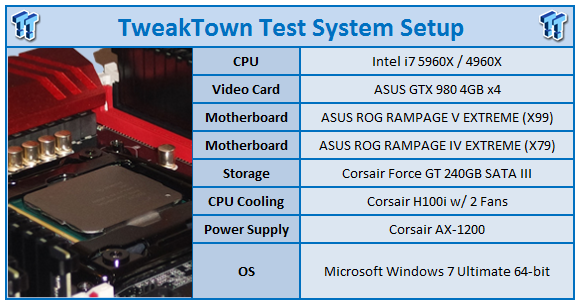
We would like to thank the following companies for supplying and supporting us with our test system hardware and equipment: Intel, ASUS and Corsair.
When it comes to clock speeds, we'll be running both setups overclocked. That means that the older X79 i7 4960X setup will be running at 4.8GHz on our ASUS RAMAGE IV EXTREME. As for the X99 i7 5960X setup, that comes clocked in a little lower at 4.6GHz, but of course carries with it more cores and an upgrade in a few other key areas that drives performance to new levels.
The big thing about our benchmark line up here today is that everything is tested at the massive 4K resolution or 3840 x 2160. This is going to be interesting as more often than not, when we move to a resolution this high, the difference between FPS is minimal as it's all about the video card setups and not the motherboard, CPU and RAM one.
Still, let's find out, just what kind of setup you should be pairing with that Quad SLI GTX 980 4GB setup.
The FPS Numbers Explained
When we benchmark our video cards and look at the graphs, we aim to get to a certain level of FPS which we consider playable. While many may argue that the human eye can't see over 24 FPS or 30 FPS, any true gamer will tell you that as we climb higher in Frames Per Seconds (FPS), the overall gameplay feels smoother. There are three numbers we're looking out for when it comes to our benchmarks.
30 FPS - It's the minimum number we aim for when it comes to games. If you're not dropping below 30 FPS during games, you're going to have a nice and smooth gaming experience. The ideal situation is that even in a heavy fire fight, the minimum stays above 30 FPS making sure that you can continue to aim easily or turn the corner with no dramas.
60 FPS - It's the average we look for when we don't have a minimum coming at us. If we're getting an average of 60 FPS, we should have a minimum of 30 FPS or better and as mentioned above, it means we've got some smooth game play happening.
120 FPS - The new number that we've been hunting down over recent months. If you're the owner of a 120 Hz monitor, to get the most out of it you want to get around the 120 FPS mark. Moving from 60 FPS / 60 Hz to 120 FPS / 120 Hz brings with it a certain fluidity that can't really be explained, but instead has to be experienced. Of course, if you're buying a 120 Hz monitor to take advantage of 3D, an average of 120 FPS in our benchmark means that in 3D you will have an average of 60 FPS, which again means you should expect some smooth gameplay.
Why are some graphs incomplete?
Adding new game benchmarks is a long, tedious and time consuming task as every video card has to be re-tested in those new benchmarks. Because of that reason we have always just evaluated our benchmark line up every six months. To stay up to date and current with the latest benchmarks and games available, we've changed our approach to adding new benchmarks.
Our benchmark line up will progress and be updated as newer more intensive games with benchmarks comes to light. While this will mean that initially you may only see a single video card in those particular graphs, as the weeks go on and we test more and more video cards, the results will grow quickly. This will help keep our benchmark line up as up to date as possible as we introduce and remove games on a constant basis.
Benchmarks - 3DMark
3DMark 11
Version and / or Patch Used: 1.1
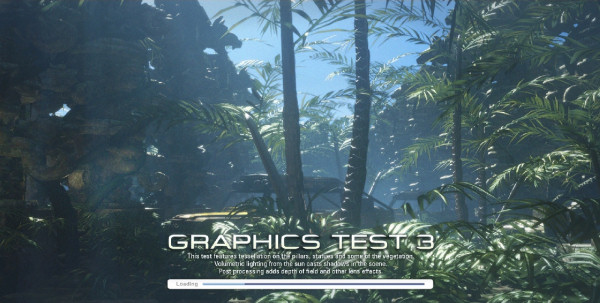
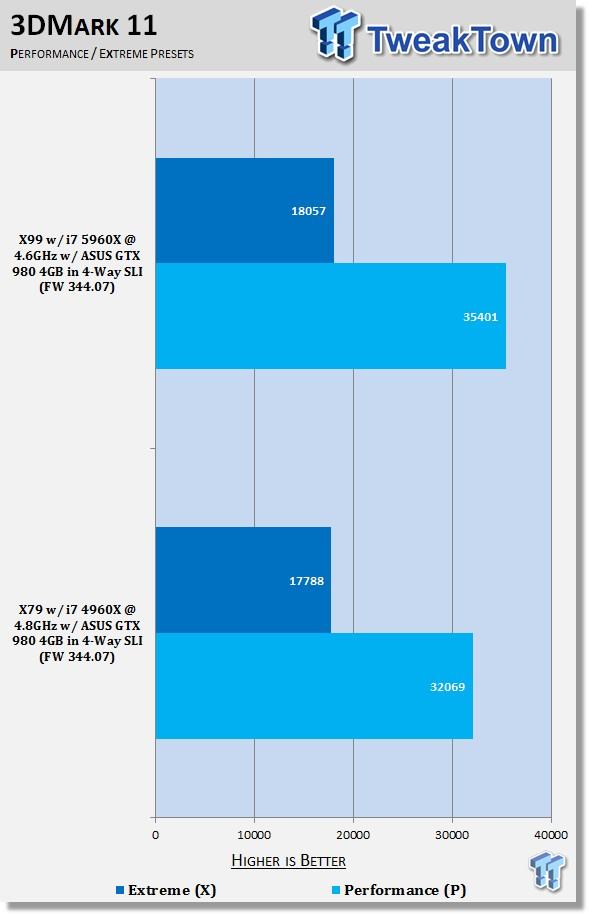
Starting off with 3DMark 11, you can see that the difference between both setups at the higher resolution Extreme preset isn't much at all.
As for the lower resolution Performance preset, you can see a bit of a gap separating them.
3DMark Fire Strike
Version and / or Patch Used: 1
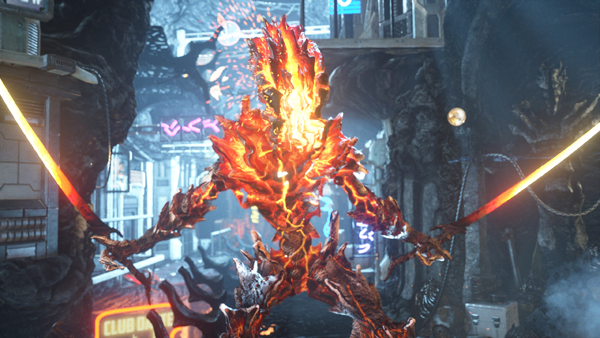
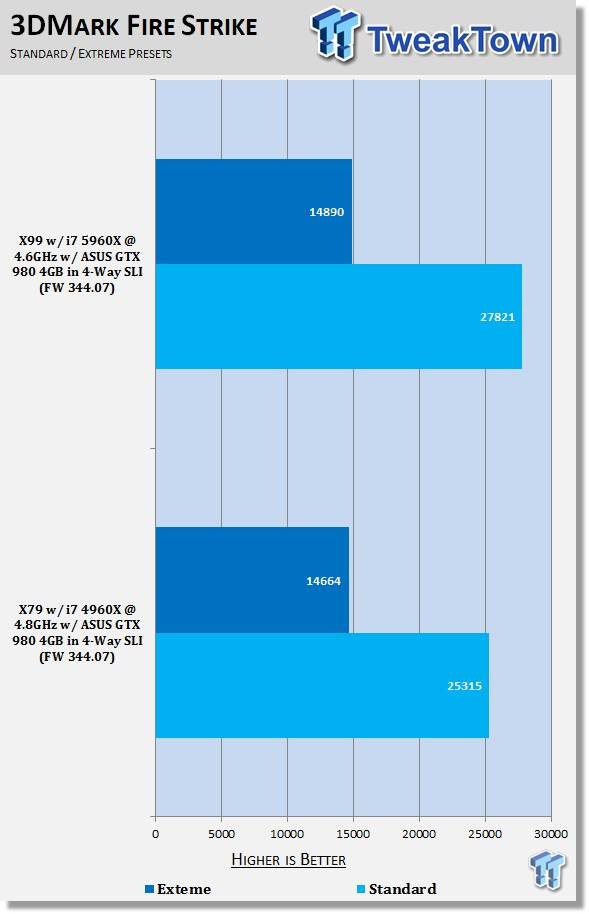
Moving into Fire Strike, you can see the same kind of performance difference as to what we saw under 3DMark 11. While we do see a clear difference at the lower resolution standard preset, moving to the higher resolution Extreme preset pretty much puts the two setups on top of each other.
Benchmarks - Unigine Heaven & Phantasy Star Online 2
Unigine Heaven Benchmark
Version and / or Patch Used: 3

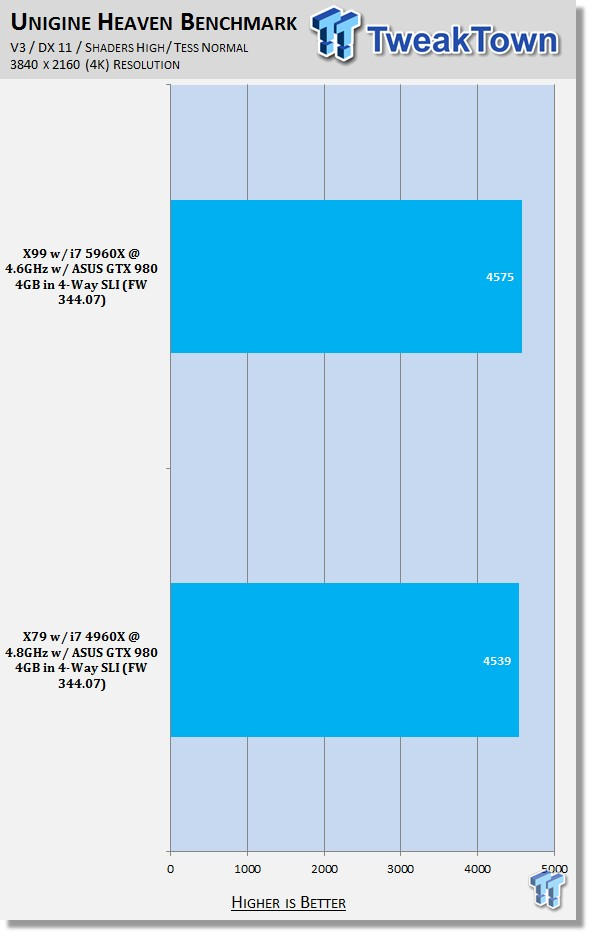
Moving into our testing at 4K only, you can that both setups perform nearly on top of each other. Outside of a little bit of fluctuation, there's really not too much to see here.
Phantasy Star Online 2
Version and / or Patch Used: Standalone Benchmark

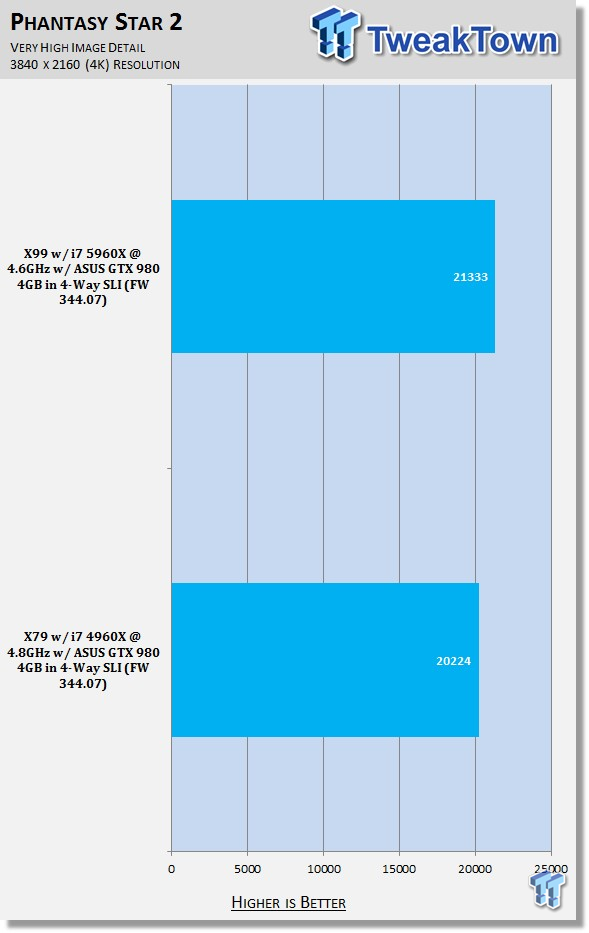
PSO 2 is a little older and not quite as intensive. Because of that, you can see that the X99 setup gives us about a 5% increase in performance. Overall, though, it's not a huge performance increase, and really not one that would convince you to spend the money going to X99, if you're already on X79.
Benchmarks - Lost Planet 2 & Just Cause 2
Lost Planet 2
Version and / or Patch Used: Standalone Benchmark

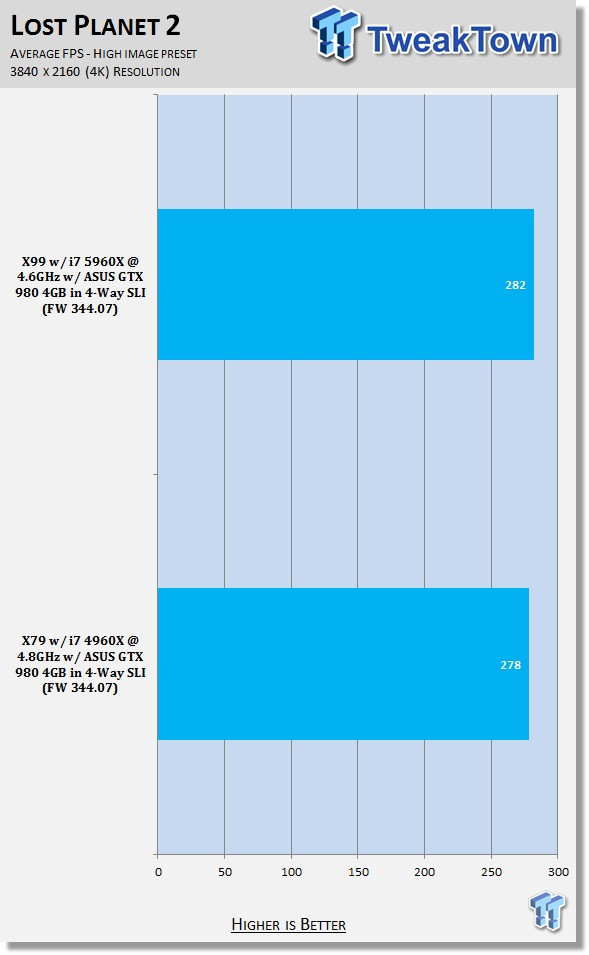
Lost Planet 2 is again one of our older benchmarks. Looking above, though, you can see we've got a difference of just 4 FPS between the two setups. When you're talking about FPS that are nearly hitting 300, a 4 FPS variation is nothing that's going to make a difference.
Just Cause 2
Version and / or Patch Used: Latest Steam Update

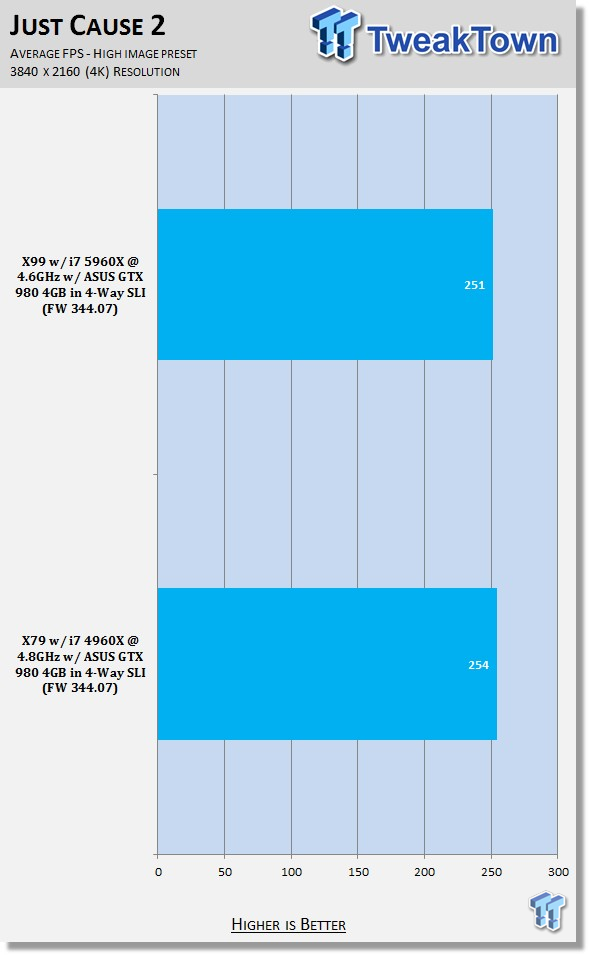
Just Cause 2 shows the same kind of results as we saw above, except in this case the X79 setup gets those extra couple of FPS. This just goes to show us that here we're really dealing with nothing more than a bit of fluctuation.
Benchmarks -Metro Last Light & Nexuiz
Metro Last Light
Version and / or Patch Used: Latest Steam Update

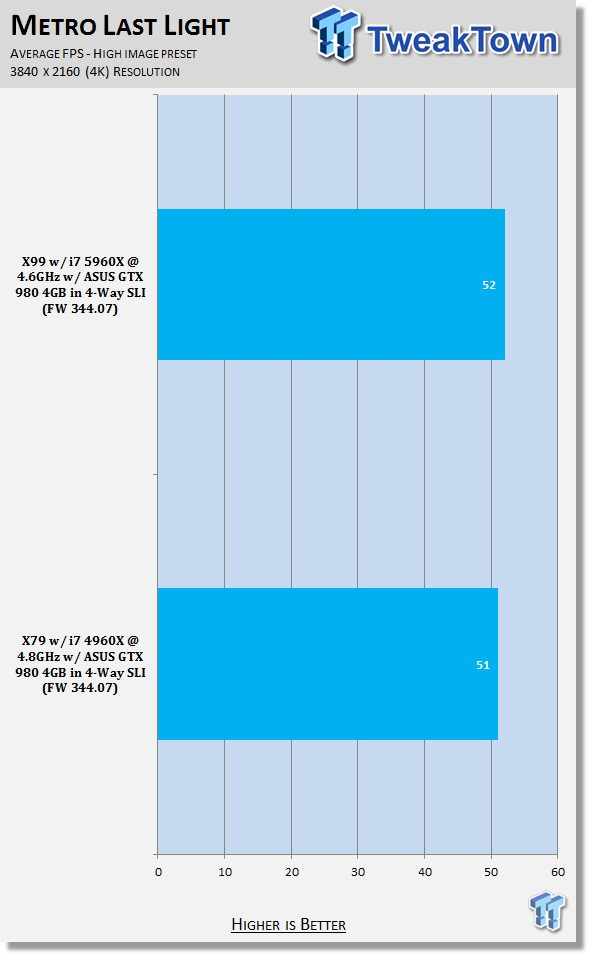
Metro Last Light is ultimately VRAM limited at this massive resolution. Not only do we not see much change as far as the FPS numbers go, but the difference between the 2-way and 4-way GTX 980 4GB performance was pretty much nothing as all three setups bounced off this low 50 FPS range, a number that is ultimately too low to be playable.
Nexuiz
Version and / or Patch Used: Latest Steam Update

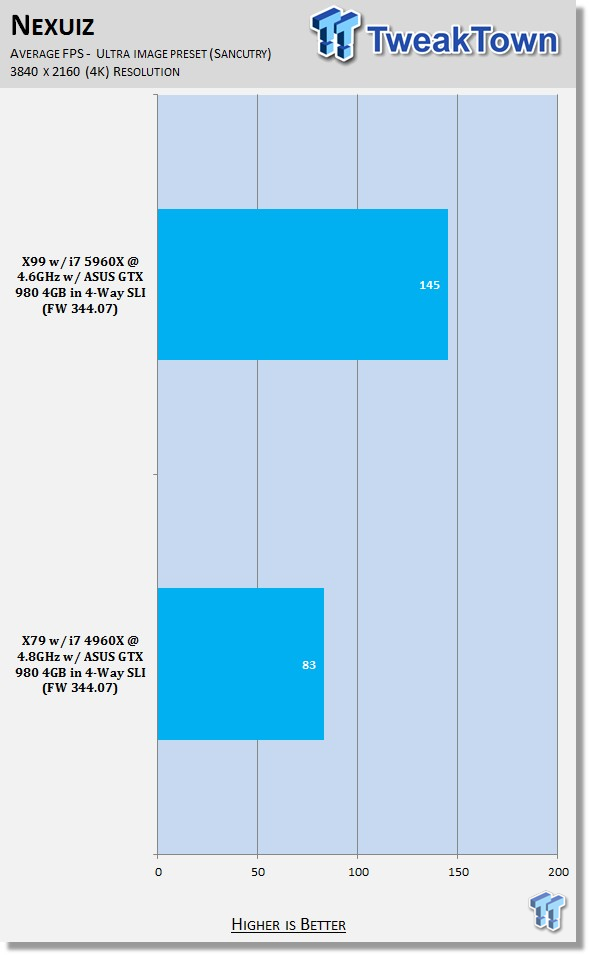
Nexuiz performance was quite interesting. Looking above, you can see that the two setups really are separated by a significant margin with the X99 setup being nearly double that of the X79 one. It's more than possible that Nexuiz is really able to make use of the extra processor features that are on offer here, something that most other games can't do.
Benchmarks - Sniper Elite V2 & Sleeping Dogs
Sniper Elite V2
Version and / or Patch Used: Standalone Benchmark
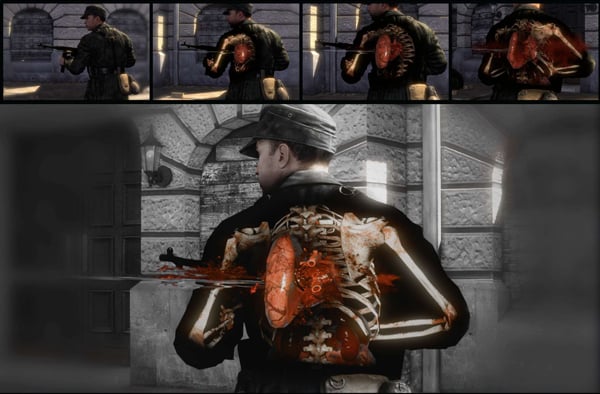
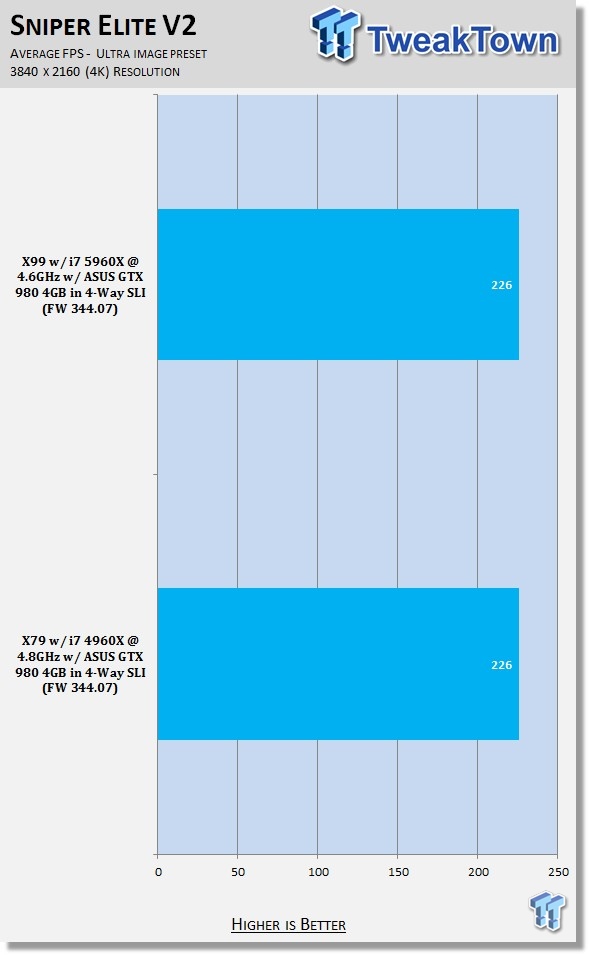
Looking above, you can see that Sniper Elite V2 numbers are identical on both setups, with not a single FPS separating them. This is pretty much summing up our performance seen thus far at the massive 4K resolution with X79 vs. X99.
Sleeping Dogs
Version and / or Patch Used: Latest Steam Update

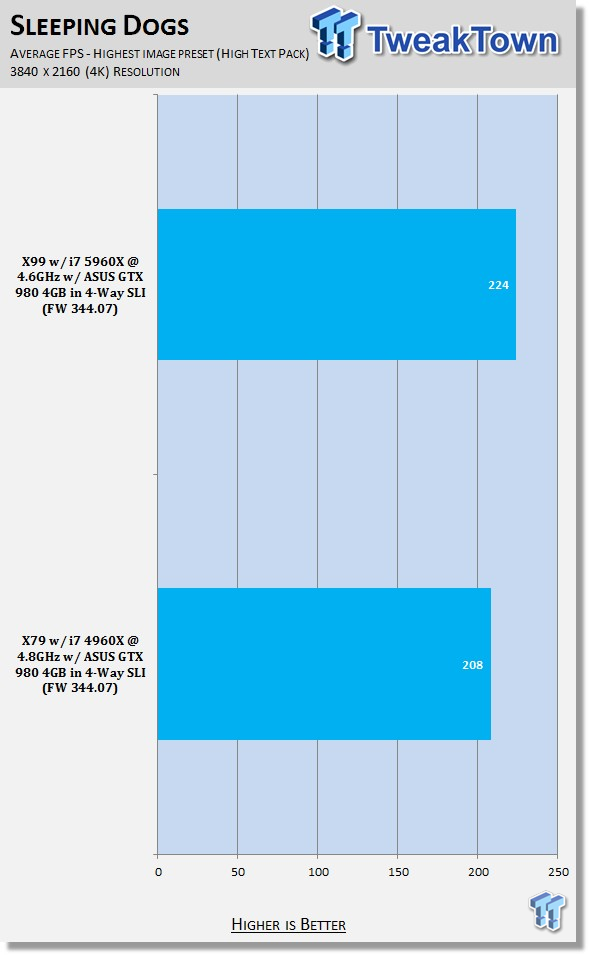
Sleeping Dogs, as you can see, gets a bit of extra performance, when comparing the two setups, the extra 16 FPS equates to around 8%. The main problem is that you're not going to notice the difference between the X79 and its 208 FPS average and the X99 and its 224 FPS average.
Benchmarks - Hitman Absolution & Tomb Raider
Hitman Absolution
Version and / or Patch Used: Latest Steam Update
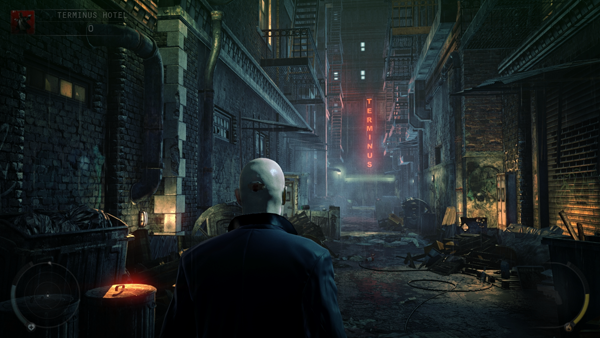
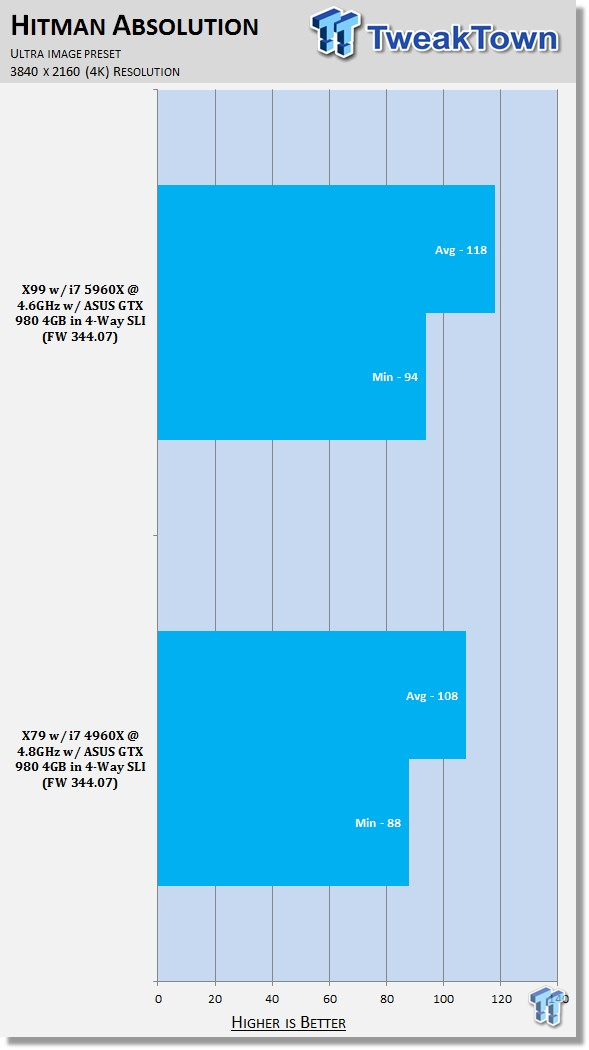
When it comes to Hitman Absolution, you can again see that we've got a slight difference between the two setups with the X99 setup getting a slight performance increase in both the minimum and average departments. The biggest issue is that when it comes to actually playing the game, you're not going to be able to tell the difference between either setup as both are going to be extremely smooth anyway.
Tomb Raider
Version and / or Patch Used: Latest Steam Update
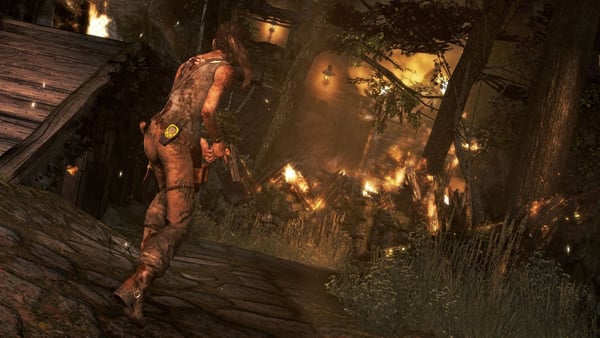
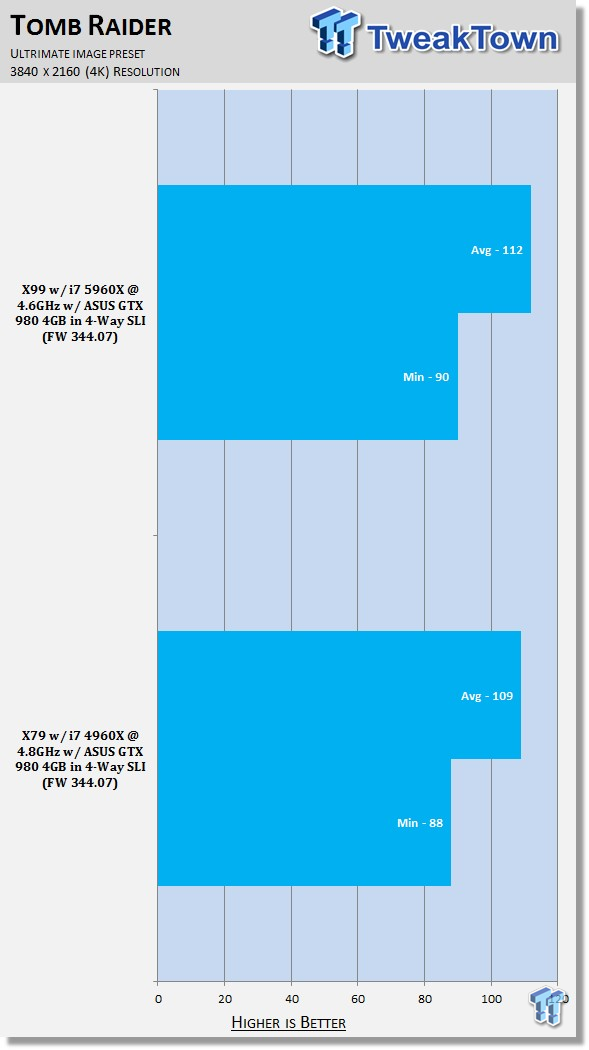
Tomb Raider sees a slight performance boost from the X99 setup, although it's not quite as large as we saw under Hitman Absolution and Sleeping Dogs. Again, though, you're not going to see a difference between playability as both setups offer some amazing FPS at this resolution under this extremely intensive game.
Benchmarks -Battlefield 4 & GRID Autosport
Battlefield 4
Version and / or Patch Used: Latest Origin Update

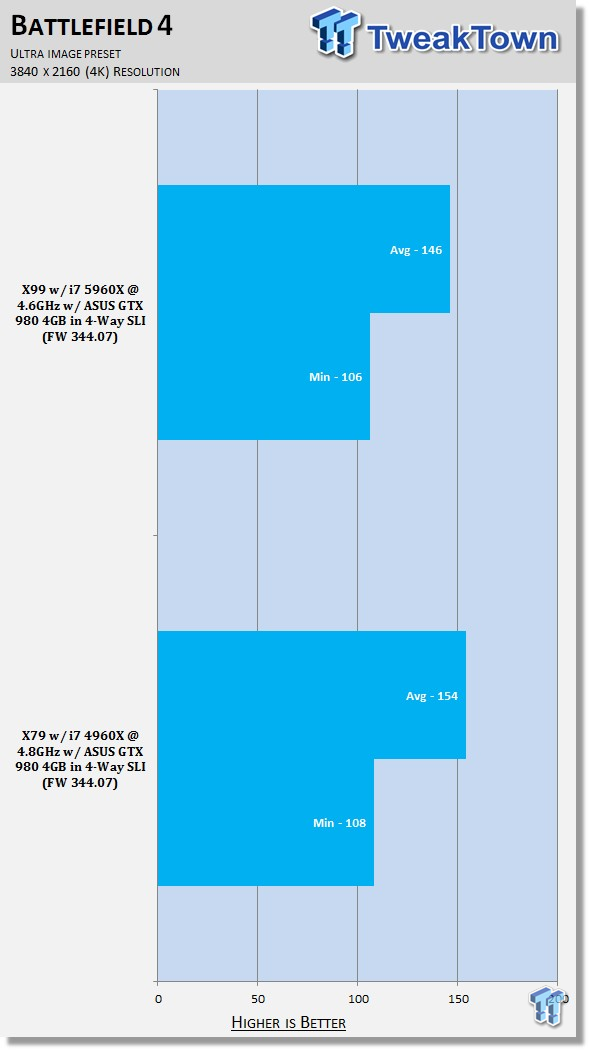
Battlefield 4 sees the X99 setup sit back a little as we're dealing with fluctuation between the two setups. Overall, though, you can see that both setups manage to push some really strong FPS at this massive resolution.
GRID Autosport
Version and / or Patch Used: Latest Steam Update
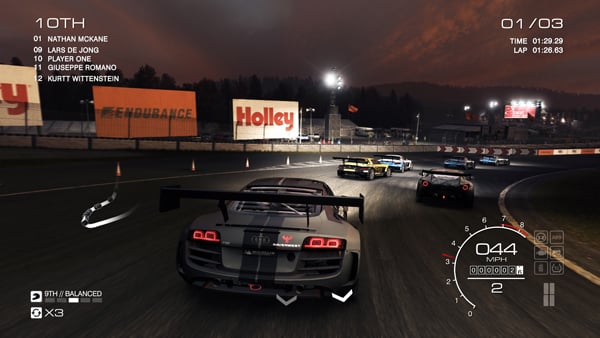
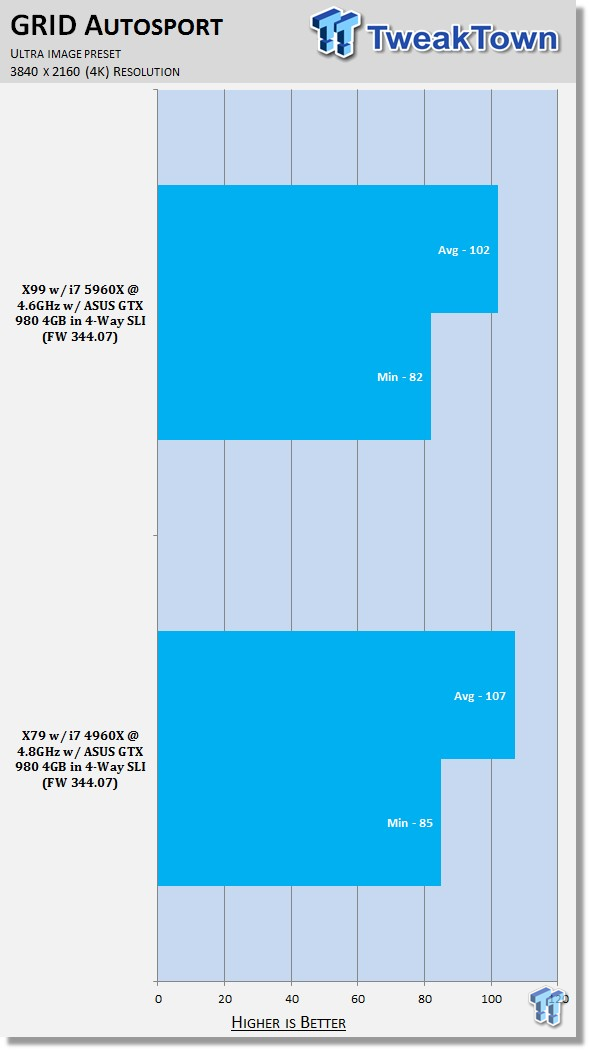
GRID Autosport again sees a bit of fluctuation between the two setups with the X99 one coming in a little behind in this case. Overall, we continue to see awesome performance on both setups, with solid FPS at this massive 4K resolution.
Benchmarks - High Quality AA and AF
High Quality AA and AF Testing
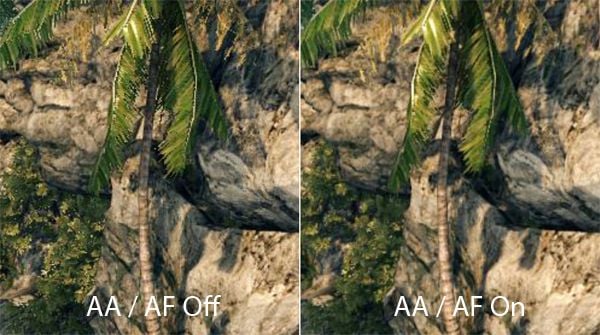
While we test all our games with maximum in-game settings, turning on Anti-Aliasing (AA) and Antistrophic Filtering (AF) helps take the intensity of our testing to another level.
Here we see video cards go from playable FPS to unplayable FPS and the real power houses continue to help break that 60 FPS mark we always aim for to provide a smooth gaming experience.
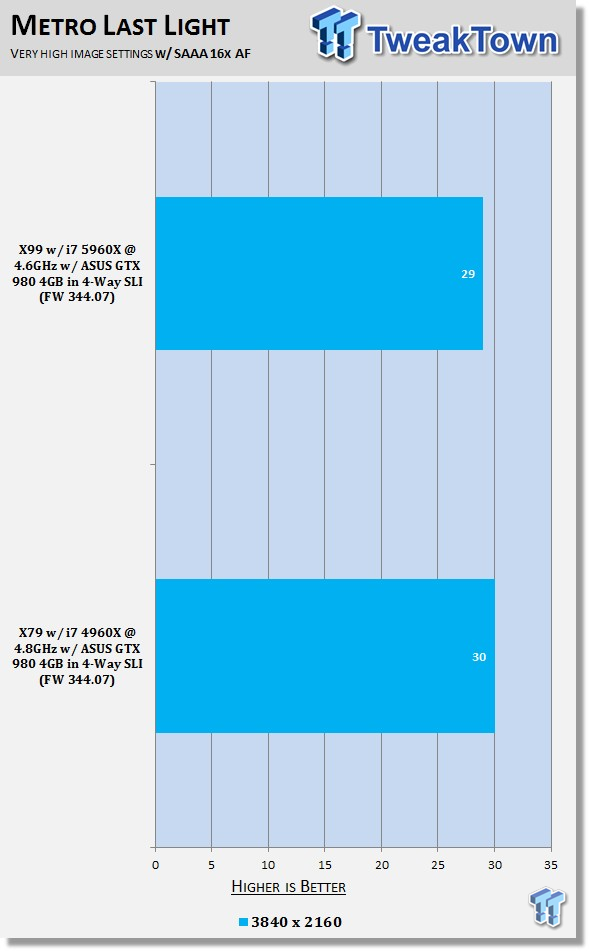
Metro Last Light with AA and AF sees the FPS numbers just plummet. Not only do we see just a single FPS between two setups, but we just see numbers that are just way too low, even in Quad SLI. Metro Last Light is one game that can really make use of the extra VRAM, something we discovered when first testing the Titan.
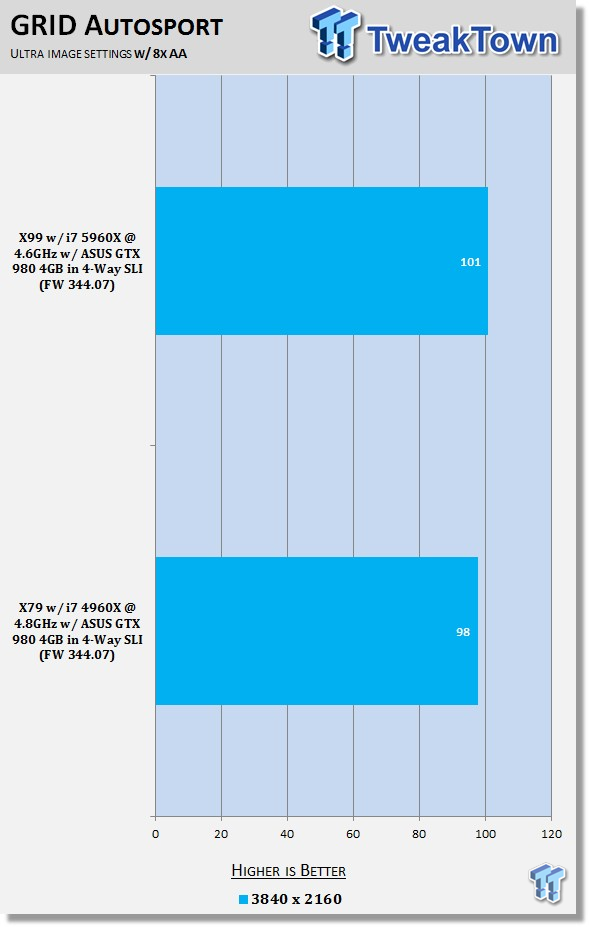
GRID Autosport sees both setups perform very closely to each other. The extra 3 FPS seen on the X99 setup translates to just a 3% difference in performance, and more than likely, it's just a bit of fluctuation.
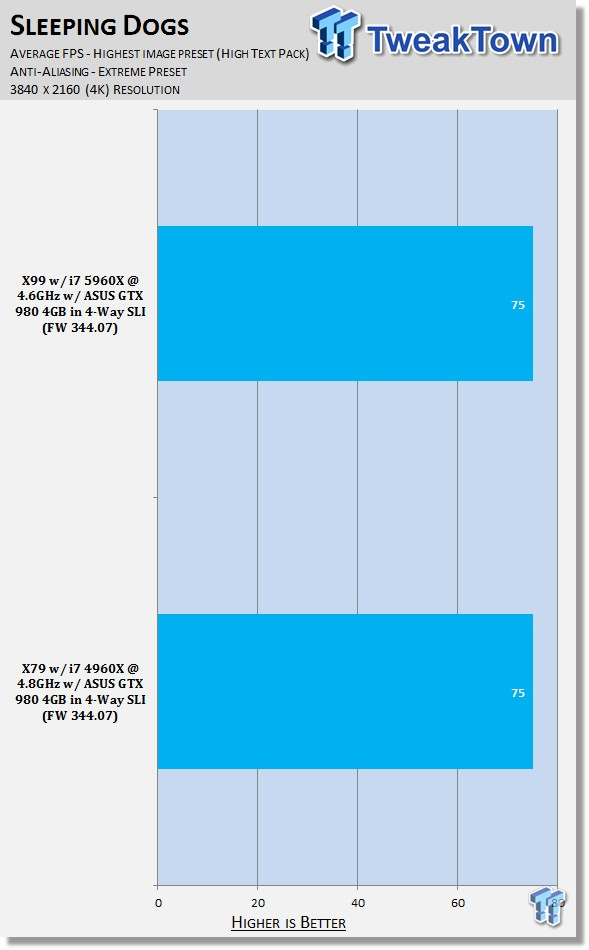
Finishing off our testing, we see that Sleeping Dogs sees both setups perform identically, which does a good job of pretty much summing up what we're dealing with today. We'll cover all this when we wrap everything up in our final thoughts.
Power Consumption Testing

Using our PROVA Power Analyzer WM-01--or "Power Thingy" as it has quickly become known as to our readers--we are now able to find out what kind of power is being used by our test system and the associated video cards installed. Keep in mind that it tests the complete system (minus LCD monitor, which is plugged directly into AC wall socket).
There are a few important notes to remember, though. While our maximum power is taken in 3DMark06 at the same exact point, we have seen in particular tests the power being drawn as much as 10 percent more. We test at the exact same stage every time, so tests should be very consistent and accurate.
The other thing to remember is that our test system is bare minimum--only an SSD hard drive is used with a single CD ROM and minimal cooling fans.
So while the system might draw 400 watts in our test system, placing it into your own PC with a number of other items will result in a higher draw.
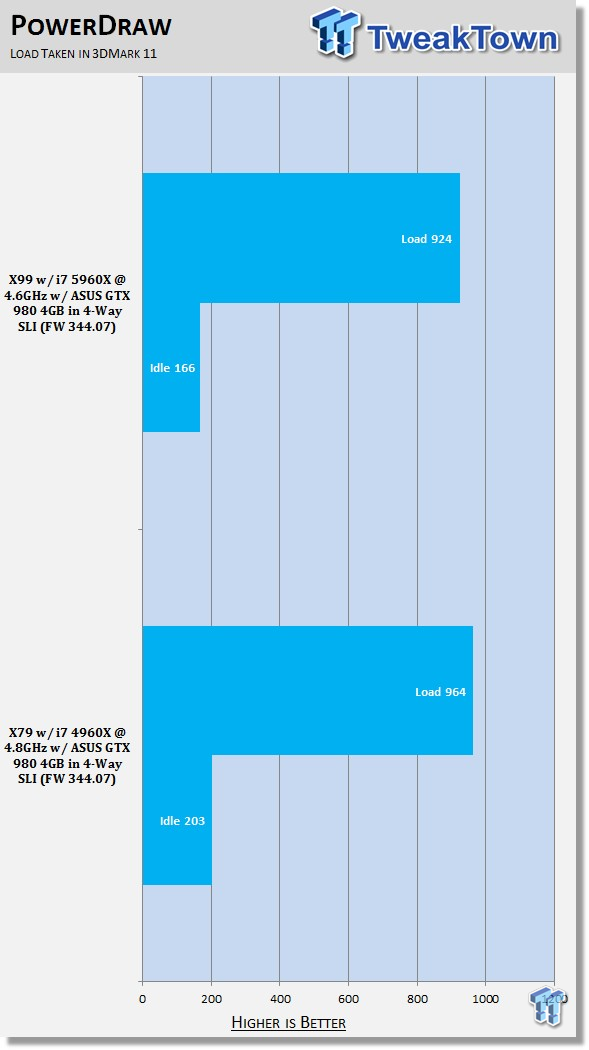
Comparing the two setups, you can see the new X99 build draws less power in both the idle and load department. We're not quite sure that would be enough to get you to upgrade to it over X79, though.
Final Thoughts
Nobody is going to deny that the X99 system is a more powerful rig. Whenever the CPU plays a key part, it manages to outperform the X79 setup without an issue. The problem is that the CPU tends to only play such an important part in gaming situations when the resolution is quite low. In this case, that's seen under 3DMark 11 and 3DMark Fire Strike, when we benchmark at the standard lower resolution setting.
It's fair to assume that if you're looking at buying a video card setup as high-end as this, that you're going to be gaming on something like a 4K monitor. If you found yourself thinking that it's not worth going for such a strong video card setup, as you don't want to upgrade to X99, it's clear that it's not something you have to worry about when this kind of resolution comes into play. Apart from Nexuiz which saw a massive increase, you can see everything else at the extra intensive 3840 x 2160 resolution sees no change at all, or at least very minimal.
I think everything was summed up fairly well in our previous 4K Showdown article, which saw the results of one, two, three and four GTX 980 4GB cards run in SLI. The sweet spot for SLI continues to be at two cards, as we see that setup for the most part really having no issue handling even the most intensive of games.
If you're worried that your X79 setup isn't going to be able to make the most of such a high-end video card setup, I think we did a good job of proving today that it's not something that you need to worry about at all. So, if you're thinking about going for a quad SLI GTX 980 4GB setup on your X79 setup, not having an X99 based rig shouldn't be the thing that stops you.
The thing that should stop you is just the overall value of the setup. As we just said, two video cards are indeed the sweet spot for this setup. You could put a bit of an argument forward for going 3-way, but the value does start to drop off when throwing a third card into the mix. And it's pretty tough to justify a four-way setup, unless money is not an issue.
If you're really set on looking at the performance of three cards, I think one of the best setups will be the GTX 970 4GB. The model alone holds fantastic value and with 3-way being the maximum for that card, you don't have to worry about thinking about throwing a fourth card into the mix. When it comes to these new NVIDIA Maxwell setups, it looks like 2-Way SLI GTX 980 4GB or 3-Way SLI GTX 970 4GB would be the perfect place to be, and as we saw today, an X79 or X99 setup will support them just fine with basically equal performance between both Intel platforms.

 United
States: Find other tech and computer products like this
over at
United
States: Find other tech and computer products like this
over at  United
Kingdom: Find other tech and computer products like this
over at
United
Kingdom: Find other tech and computer products like this
over at  Australia:
Find other tech and computer products like this over at
Australia:
Find other tech and computer products like this over at  Canada:
Find other tech and computer products like this over at
Canada:
Find other tech and computer products like this over at  Deutschland:
Finde andere Technik- und Computerprodukte wie dieses auf
Deutschland:
Finde andere Technik- und Computerprodukte wie dieses auf